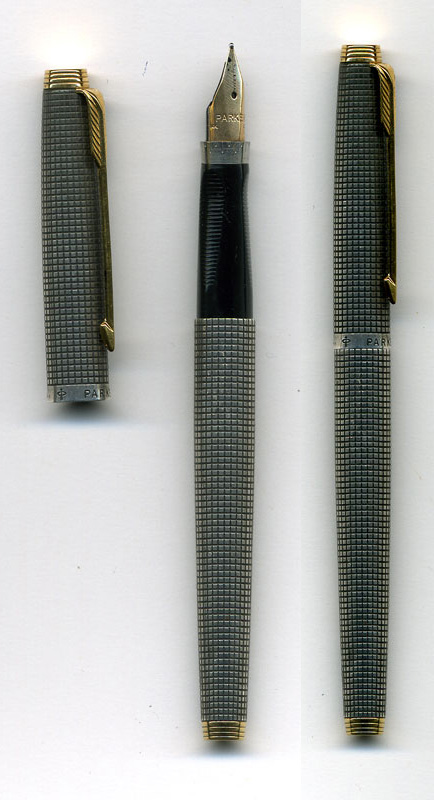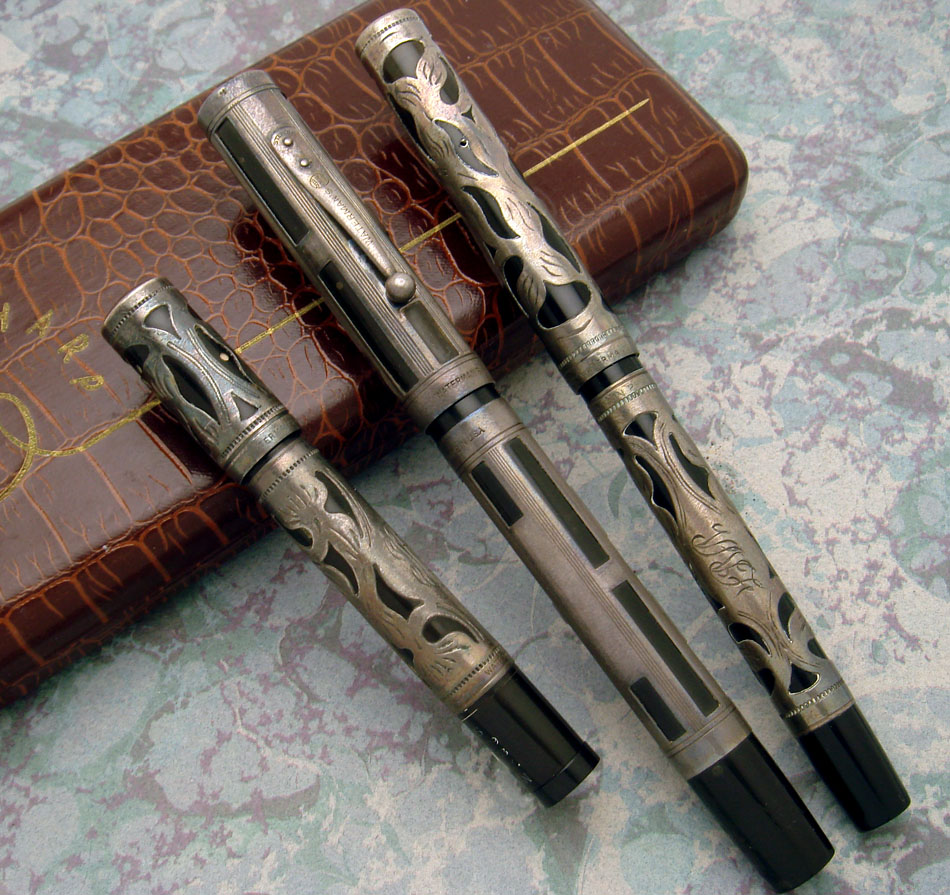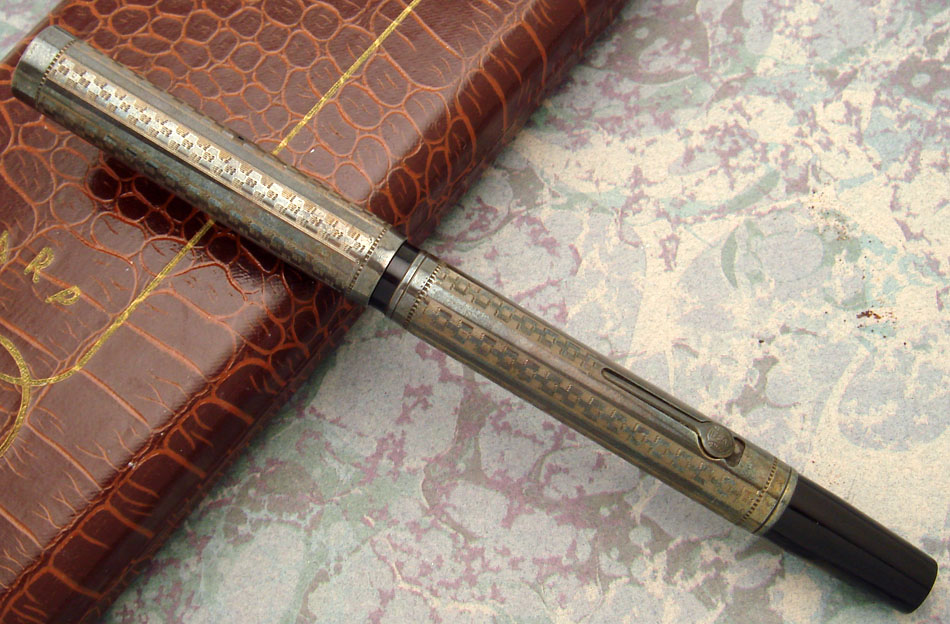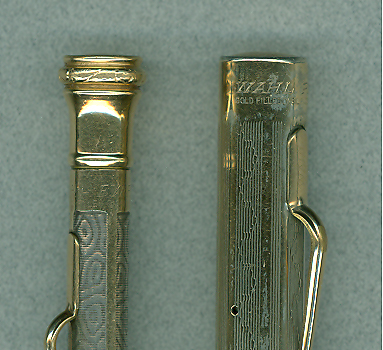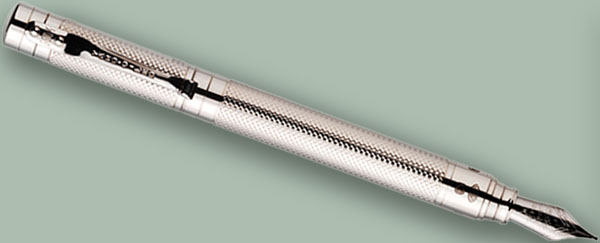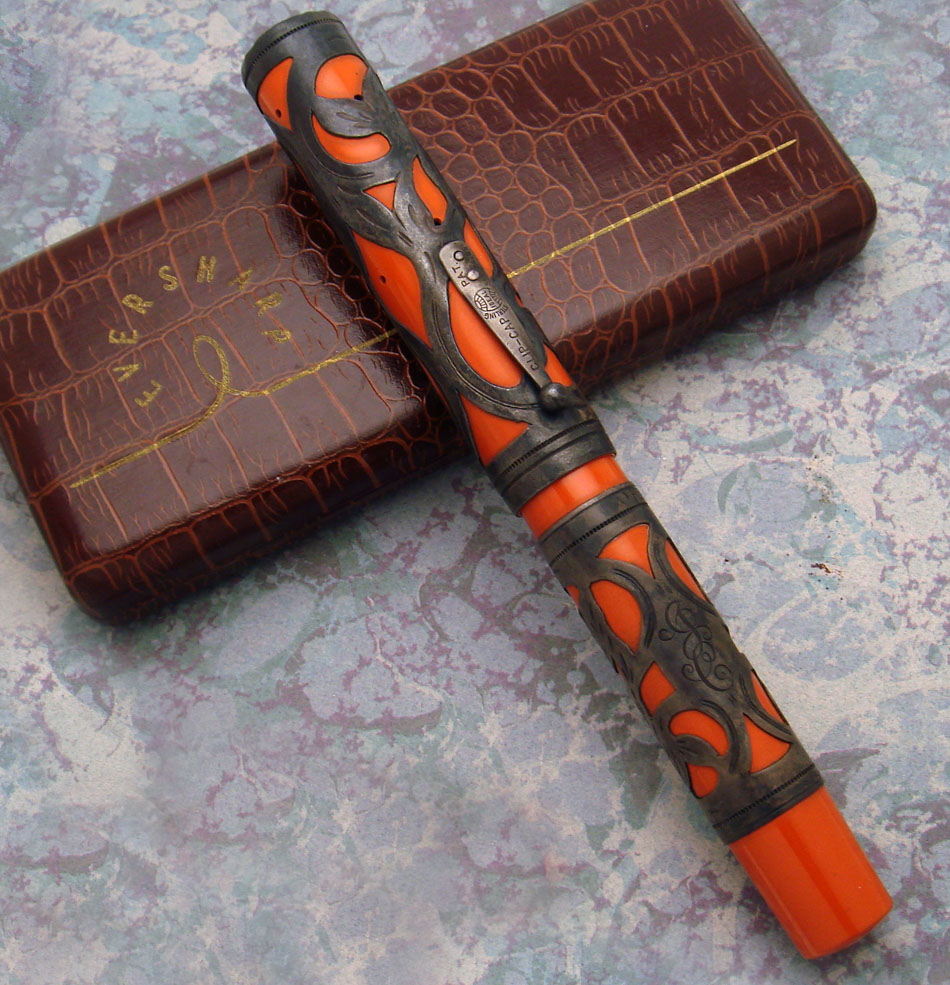Some collectables fields overwhelmingly favor preservation of original patina and finish. Antique furniture loses value if original finish is replaced. I've heard the same is true for Stradivarius violins as well. In Numismatics, original toning (a bit of a euphemism for generally appealing tarnish) adds value to silver and to gold coins.
The issue is less significant in pen collecting. Most pens of gold-tone metal or with similar overlay tend to be pretty bright by the time we find them, and if there is spotty dark tarnish, few object to cleaning the metal. Silver pens often turn up with simple gray/black oxidation, and many favor leaving that alone or giving at most a light wipe-down to lighten the effect. Yes, many people (also true for newbie Numismatists) like "shiny white", but frankly, finding a 1915 Waterman overlay with glow-in-the-dark bright trim can be-- to borrow a term recently used by a writer here at FPB-- jarring. Still, that polished Waterman overlay really does not lose value for having had its nice dark tone polished away, unlike the disaster if one applies polish to the original finish of an old coin.
Metal fountain pens with attractive iridescent toning are uncommon finds.
Couple years ago I picked up a ring-top metal 1920's Sheaffer set. Pattern in the gold-filled metal is a bit less common than some I see, but not at the lofty level of the slotted, basket weave, filigree, etc patterns.
Near mint or mint condition, it probably rested against something that toned it, paper or material containing sulfur perhaps. I've seen but a handful of old pens with this level of color. Stunning pen. It would be a crime against pendom to polish this set. The photo does not quite capture the eye appeal.
So, I present a tarnished pen set and invite thoughts regarding the merits of shining it up. Also, do share images of your own patinated pens.
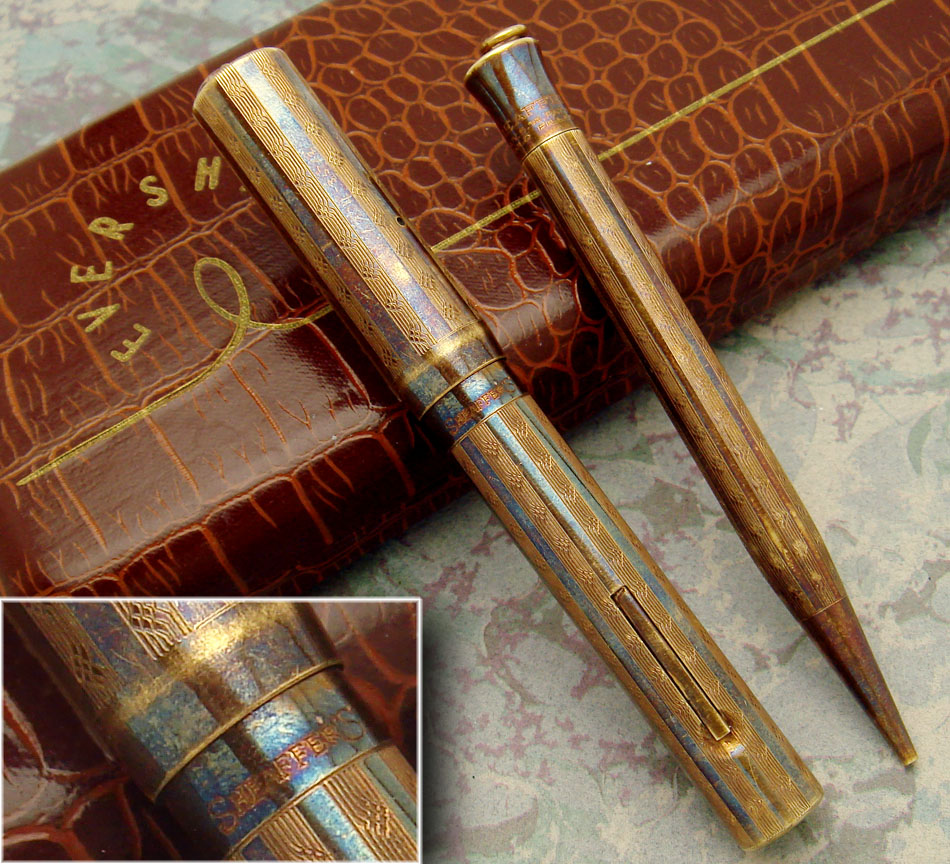
regards
David






